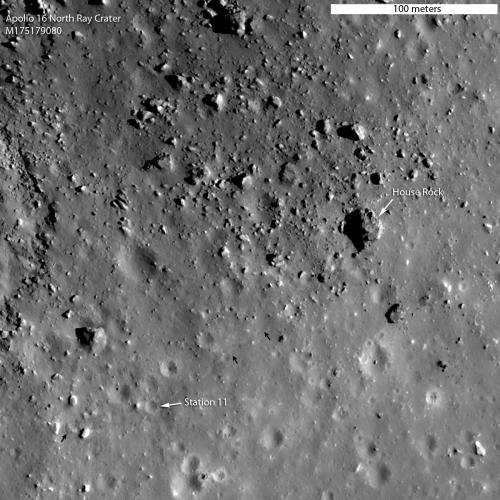Apollo 16: What young really means on the moon

(PhysOrg.com) -- One of the main goals of the Apollo 16 mission was to explore and sample a young bright-rayed crater aptly named North Ray crater (890 m diameter). Its high reflectivity is due to its young age.
During an impact event, geologic material is excavated and spread around a crater. The deepest material ends up near the rim, and shallower material is thrown farther. The pre-existing surface was mature, meaning that its brightness or albedo was diminished over time due to solar wind and micrometeorite bombardment (space weathering). The fresh material had not suffered these effects, thus its high albedo.
This space weathering process takes hundreds of millions of years to complete. At the the time of the Apollo 16 mission scientists did not know the age of North Ray crater, nor did they know as much as we know today about the details of the space weathering process, so an important goal was to learn what young really means on the Moon.
Provided by JPL/NASA





















